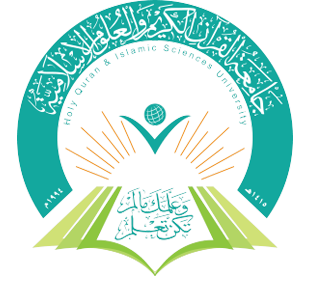valuation of Holy Quran and Its Sciences Program at the Higher College of Holy Quran at the University of Holy Quran and Islamic Sciences- Yemen, from the Perspective of Faculty Members and Fourth-Year Students
DOI:
https://doi.org/10.61821/v19i2.0177Keywords:
Holy Quran and Its Sciences Program, Faculty Members, University of Holy QuranAbstract
The study aimed to evaluate the current status of Holy Quran and Its Sciences program at the Higher College of Holy Quran -University of Holy Quran and Islamic Sciences in Yemen from the perspectives of faculty members and students. It also sought to identify strengths to reinforce them and address areas of weakness.
To achieve the study's objectives, a questionnaire consisting of 63 items was developed, divided across five fields: (objectives, content, tools, accompanying activities, and correction). The study utilized the descriptive-analytical approach. The study sample included 232 individuals: 98 faculty members and 134 fourth-year students, selected intentionally. The sample represented 100% of the study population for the academic year 2022/2023.
The study's findings revealed the following:
- The status of the Holy Quran and Its Sciences program at the University of Holy Quran and Islamic Sciences was rated highly across all program areas and overall, with a mean score ranging between (3.71, 3.73) from the perspectives of faculty members and students.
- The item “Students’ orientation towards contributing positively to the development of their community” ranked first with a very high score from the perspectives of faculty members and students.
- There were no statistically significant differences at the significance level (α = 0.05) between the mean scores of the faculty members' sample in evaluating Holy Quran and Its Sciences program at the University of Holy Quran and Islamic Sciences attributed to the variables (gender and experience).
- There were statistically significant differences at the significance level (α = 0.05) between the mean scores of the faculty members' sample in evaluating Holy Quran and Its Sciences program at the University of Holy Quran and Islamic Sciences in the fields of (content and teaching methods), attributed to the variable (branch), in favor of the main center (Seiyun).
- There were no statistically significant differences at the significance level (α = 0.05) between the mean scores of the students' sample in evaluating Holy Quran and Its Sciences program at the University of Holy Quran and Islamic Sciences attributed to the variables (gender and branch).
The study recommended the use of advanced tools and technology in presenting the academic material.
Downloads

Downloads
Published
Issue
Section
License
Copyright (c) 2024 Journal of the University of Holy Quran and Islamic Sciences

This work is licensed under a Creative Commons Attribution 4.0 International License.
©This article is an open access article distributed under the terms and conditions of the Creative Commons Attribution (CC BY) license



